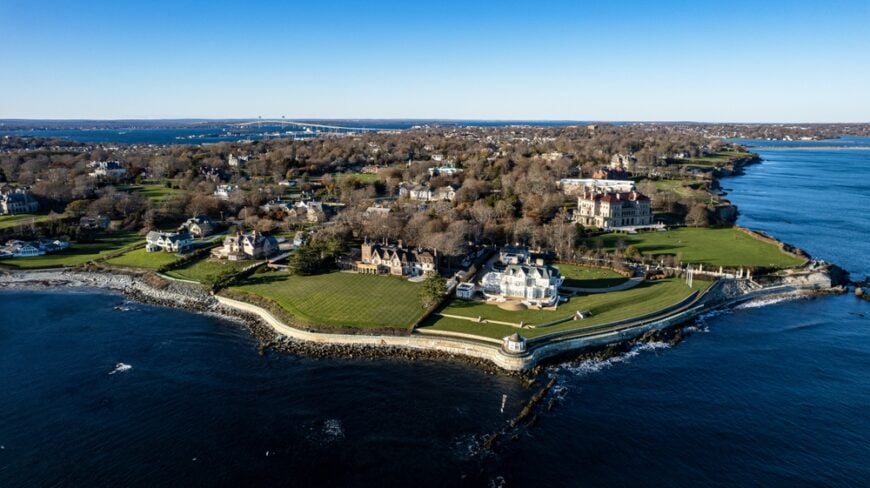
I’ve always believed Rhode Island’s magic lies in its small seaside towns, where salt air mingles with history and the ocean is never far from view. In the northern reaches of the state, you can drive only a few miles and find fishing villages, artists’ enclaves, and grand Gilded Age reminders of the past, all sharing the same coastline.
Each stop on this list has offered me a different slice of maritime life, whether that’s a quiet cove for beachcombing or a bustling harbor filled with schooners. What ties them together is scenery: sweeping bay panoramas, rocky bluffs, and rows of weather-worn shingled cottages set against blue water.
I’ve counted them down from a hidden hamlet at number 18 to the storied sailing capital at number 1, so you can plot an itinerary or simply dream about new places to dip your toes in Narragansett Bay. Let’s start at the far end of the list and work our way toward the grand finale.
18. Matunuck: Hidden Gem with Pristine Beaches
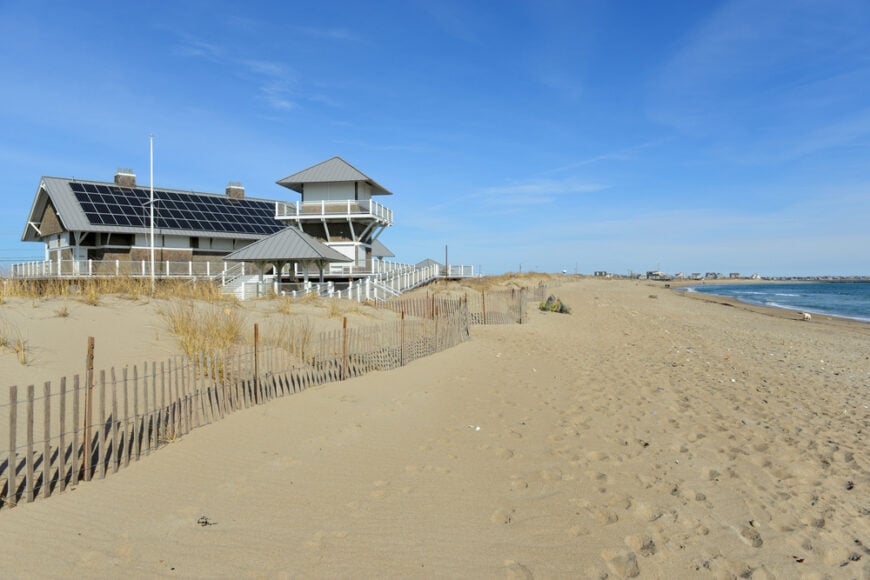
Matunuck has always felt like a place that locals whisper about rather than broadcast, which means the beaches stay blissfully uncrowded even in midsummer. I love strolling along East Matunuck State Beach at sunrise, when the only company is the rhythmic crash of waves and a few early surfers paddling out.
At night, the Ocean Mist bar sits practically on the sand, so close you can feel the floorboards tremble when a bigger set rolls in. When I crave fresh seafood, I duck into Matunuck Oyster Bar and watch the farm’s shellfish being hauled straight from Potter Pond.
Away from the shoreline, the tranquil Trustom Pond National Wildlife Refuge offers quiet trails where ospreys wheel overhead. It’s the sort of spot where time slows down and a single clam shack can count as nightlife.
The average price for a 3-4 bedroom home in Matunuck ranges from $700,000 to $1,000,000, offering coastal charm and easy access to sandy beaches in this scenic seaside village.
Where is Matunuck?
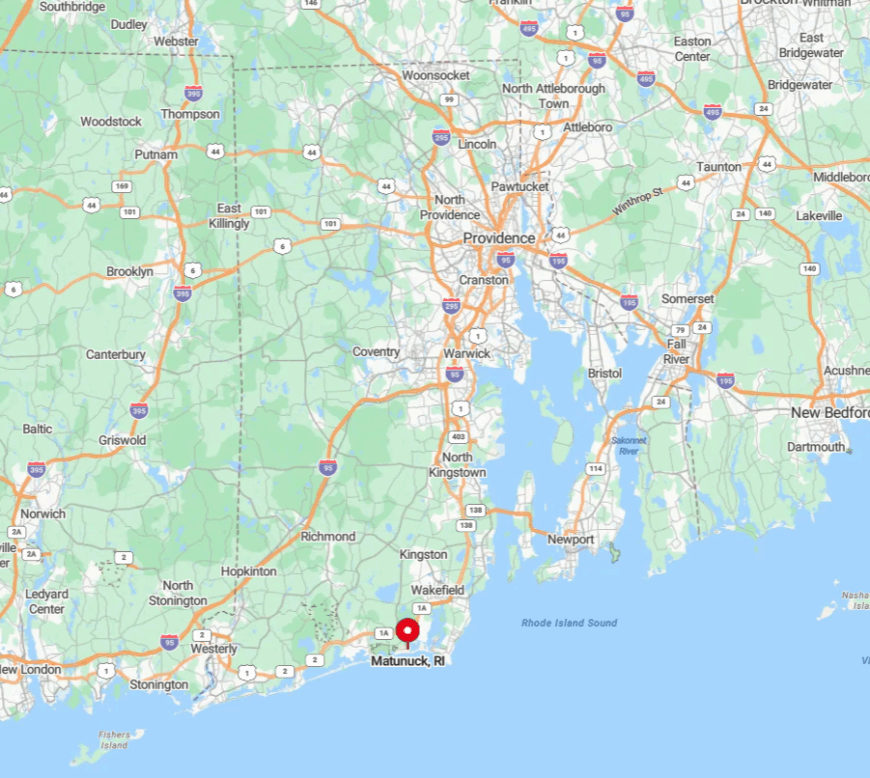
Matunuck sits in South Kingstown, tucked along Rhode Island’s southwestern shoreline between Point Judith and Charlestown Breachway. Its geography is defined by a long barrier beach that shields salt ponds from the Atlantic, creating calm back-waters ideal for oyster farming.
You’ll reach the village by following US 1 and turning off at Matunuck Beach Road; the drive feels like slipping off the main grid and into a summer postcard. Because there’s no train service or large marina, most visitors arrive by car, which keeps the crowds refreshingly light.
17. Saunderstown: Quaint Village with Narragansett Bay Views

Saunderstown may be small, but it’s packed with quiet charm that rewards anyone who takes the detour off the highway. I like parking near the old schoolhouse and walking tree-lined streets where 19th-century cottages face the bay.
The Gilbert Stuart Birthplace and Museum, a restored snuff mill, offers a leafy walking path beside a millpond alive with painted turtles. On warm evenings, the local yacht club’s Wednesday-night sailboat races turn the bay into a postcard of white sails and orange sunsets.
There’s a tiny public beach at the end of Ferry Road, perfect for a picnic and stone-skipping contest. Best of all, the village stays under the radar because most travelers speed past on the Jamestown Bridge without realizing what they’re missing.
3-4 bedroom homes in Saunderstown are priced between $600,000 and $900,000, reflecting the area’s appeal for those seeking a peaceful waterfront setting with historic character.
Where is Saunderstown?
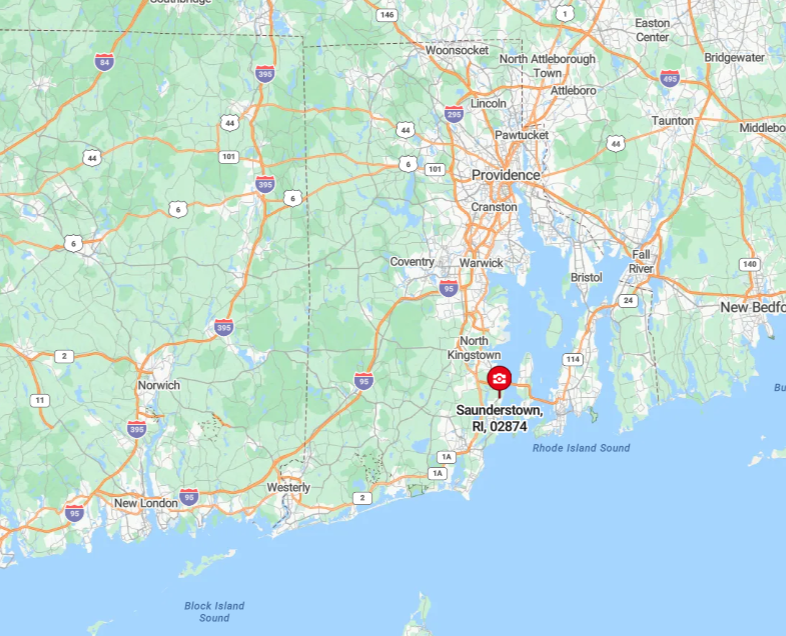
You’ll find Saunderstown on the western shore of Narragansett Bay, just north of Jamestown and south of North Kingstown. It straddles Route 1A, hugging the coastline so closely that some homes have private docks jutting into calm coves.
Reaching it is easy from Route 138; exit before the bridge and wind along narrow lanes shaded by oaks. Despite that proximity to major roads, its pocket-size waterfront and absence of commercial strip malls make it feel worlds away.
16. Warren: Artistic Port Town with Historic Flair
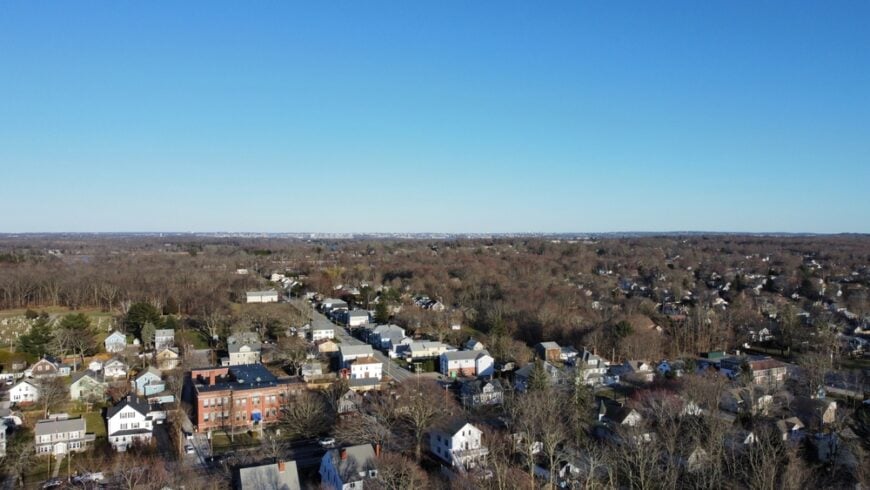
In Warren, I always sense a mash-up of old-school fishing village and modern arts scene, and the collision works beautifully. Water Street is lined with 18th-century clapboard facades now housing coffee roasters, glass studios, and a micro-brewery where you can sip an IPA while gazing at lobster boats.
The town hosts an Art Night every final Thursday of summer months, when galleries open late and musicians set up on the sidewalks. If you time your visit right, catch a show at the 1747 Baptist Meeting House—acoustics in the wood-planked sanctuary are unexpectedly perfect.
For a postcard moment, wander down to Blount Clam Shack, order a lobster roll, and watch the sun dip behind the Palmer River. Warren proves a working waterfront can still make room for creativity without losing its grit.
The average price for a 3-4 bedroom home in Warren ranges from $400,000 to $700,000, offering an affordable gateway to Rhode Island’s shoreline and colonial charm.
Where is Warren?
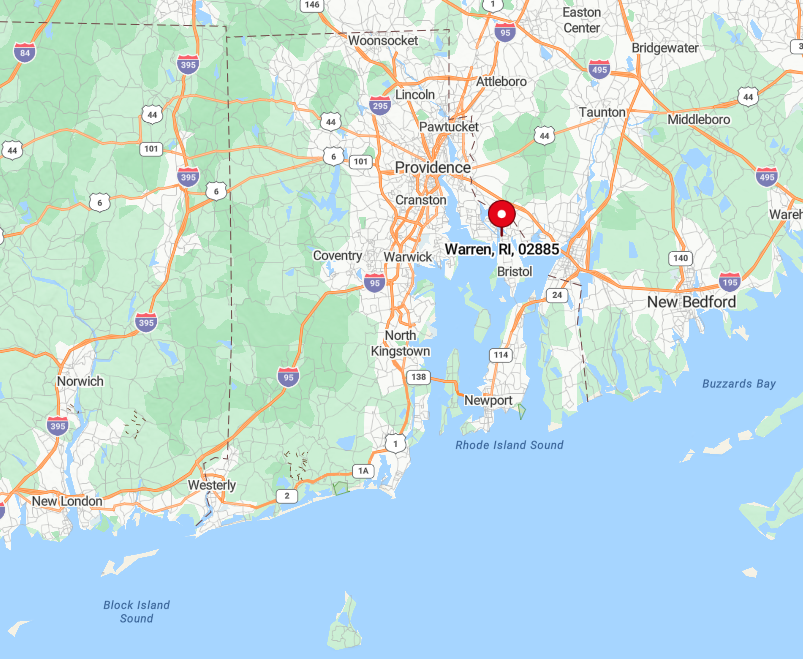
Warren sits on the eastern side of Narragansett Bay, halfway between Bristol and East Providence. The town occupies a narrow neck of land with the Warren River on one side and the Kickemuit River on the other, so water seems to appear at every end of a street.
Route 114 runs right through downtown, making it an easy stop for cyclists following the East Bay Bike Path. From Providence, the drive takes about twenty minutes, yet once you’re strolling the brick wharves it feels far removed from city bustle.
15. Westerly: Victorian Charm and Beachfront Bliss

Westerly feels a bit like Rhode Island’s southern anchor, where grand Victorian homes give way to broad, dune-backed beaches. I often start my day downtown with coffee at a converted 1912 bank before browsing Savoy Bookshop’s creaky wood floors for my next beach read.
Then it’s a quick hop to Misquamicut State Beach, where three-mile sands meet rolling Atlantic surf—ideal for bodysurfing when the swells align. If you prefer quieter stretches, head west to Watch Hill’s Napatree Point for birdlife and tumbling dunes.
Come evening, the granite-block Wilcox Park hosts free Shakespeare plays under mature elms, transforming a casual lawn picnic into a cultural outing. Westerly’s blend of architecture, arts, and shoreline always leaves me planning my next return.
3-4 bedroom homes in Westerly are priced between $500,000 and $800,000, making it a desirable choice for families looking to enjoy both beaches and a vibrant coastal community.
Where is Westerly?
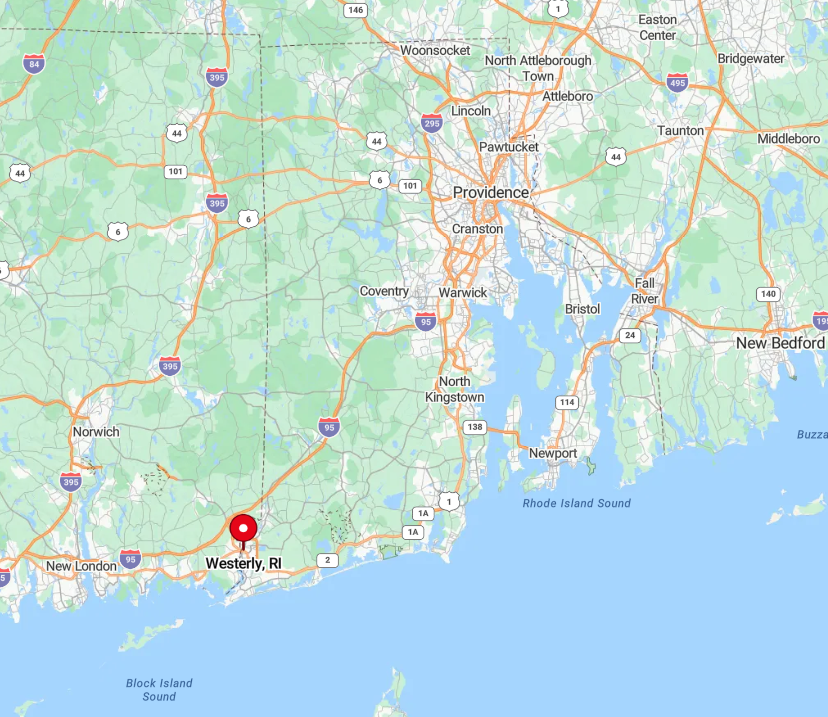
Located at Rhode Island’s southwestern tip, Westerly touches both the Pawcatuck River and the open Atlantic. Its geography creates a little peninsula punctuated by barrier beaches and tidal ponds, perfect for salt-marsh exploration.
You can reach it via I-95, exiting onto Route 78; an Amtrak station downtown also makes rail access simple from New York or Boston. Because Connecticut sits just across the river, a side trip to Mystic or Stonington adds easy variety to a weekend base here.
14. Portsmouth: Maritime History and Coastal Landscapes
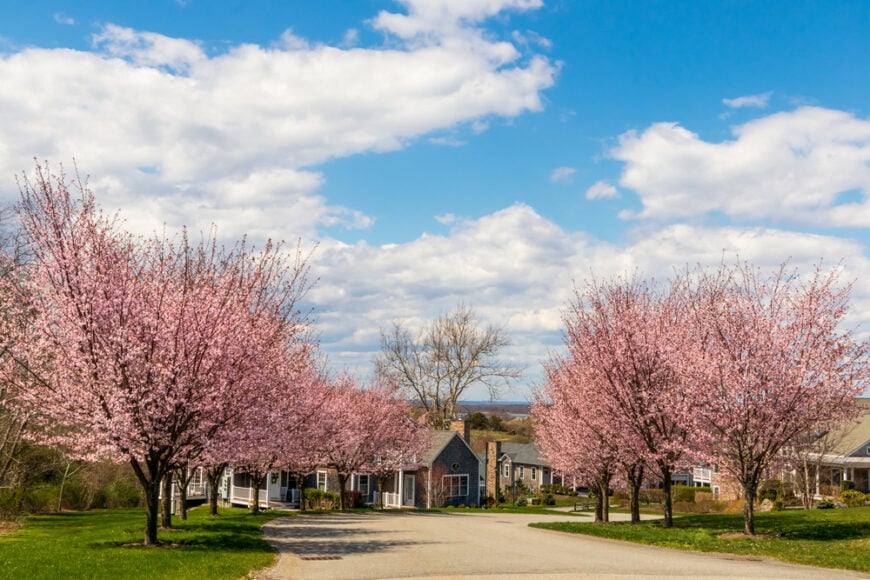
Portsmouth occupies the northern half of Aquidneck Island, and every time I drive its rolling backroads, I pass stone walls, colonial farmsteads, and glittering bay inlets. A must-see for me is the 1864 Green Animals Topiary Garden, where sculpted yews resemble elephants and giraffes overlooking Narragansett Bay.
Nearby, the historic defense earthworks at Patriots Park remind me that the Battle of Rhode Island unfolded right on these gentle hills. Sailors favor the protected waters of the Sakonnet River, and I’ve rented paddleboards at Island Park to glide beneath the old stone railway pier.
In summer, the Thursday night concerts at Glen Park pair folk music with a golden sunset over pastoral fields. Portsmouth proves seaside scenery doesn’t end at sandy beaches; sometimes it’s found in tidal rivers and orchard-dotted slopes.
The average price for a 3-4 bedroom home in Portsmouth ranges from $500,000 to $800,000, providing a scenic setting with access to the bay and quaint seaside ambiance.
Where is Portsmouth?
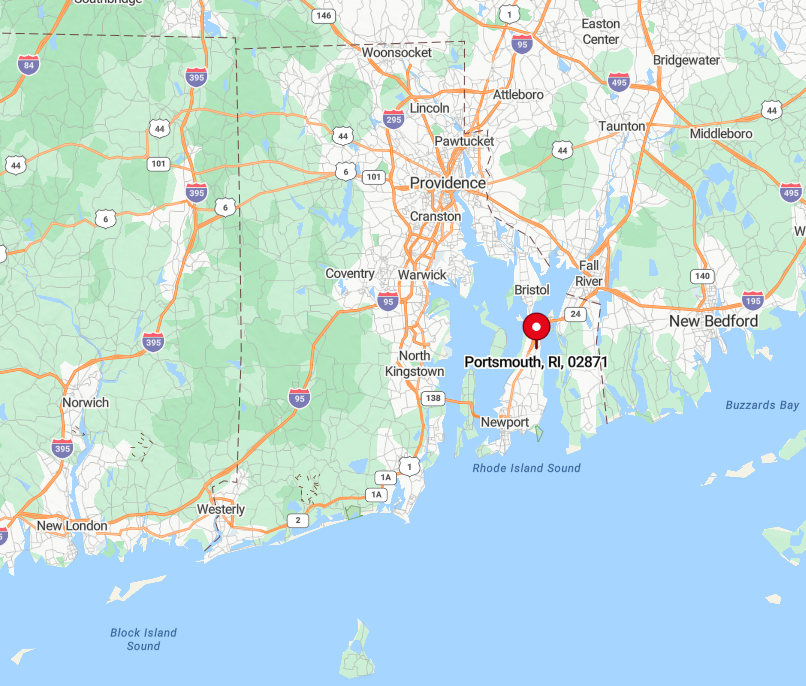
You’ll find Portsmouth about thirty minutes southeast of Providence, accessible via Route 24 as it crosses the Mount Hope Bridge onto Aquidneck Island. It’s bounded by Narragansett Bay on the west and the Sakonnet River on the east, giving nearly continuous shoreline views.
Public bus service from Newport runs regularly, but having a car lets you roam the farm roads and shoreline pull-offs at your own pace. Because the island narrows here, you can watch sunrise over the Sakonnet and sunset over the bay without changing zip codes.
13. Middletown: Coastal Farms and Ocean Vistas
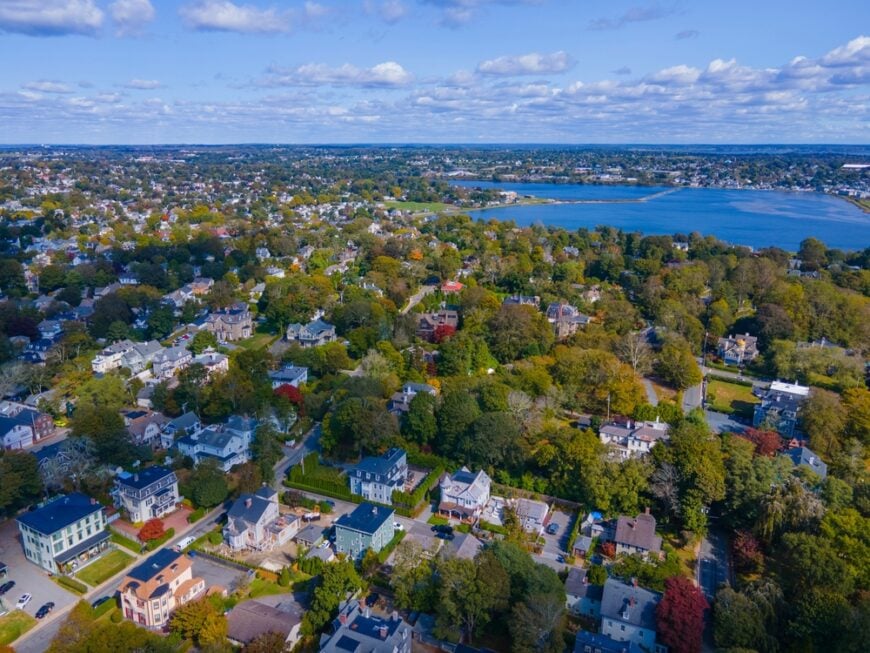
Middletown strikes a unique balance where surf-sprayed beaches meet rolling farmland, so I can bodyboard in the morning and pick berries by afternoon. Second Beach, formerly Sachuest Beach, offers perfect waves that draw surfers from across New England, while nearby Third Beach stays calm enough for families and sailors.
Inland, Sweet Berry Farm sells pick-your-own peaches in a setting that smells of sea salt and ripening fruit—an irresistible combo. I’m fond of climbing the cliffside trail at Hanging Rock, where poetess Ida Lewis once roamed, for panoramic views of Rhode Island Sound.
Wildlife lovers should not skip Sachuest Point National Wildlife Refuge; I’ve spotted snowy owls here on winter walks when the landscape feels nearly Arctic. 3-4 bedroom homes in Middletown are priced between $600,000 and $900,000, offering a mix of coastal beauty and relaxed living near beaches and harbor views.
Where is Middletown?
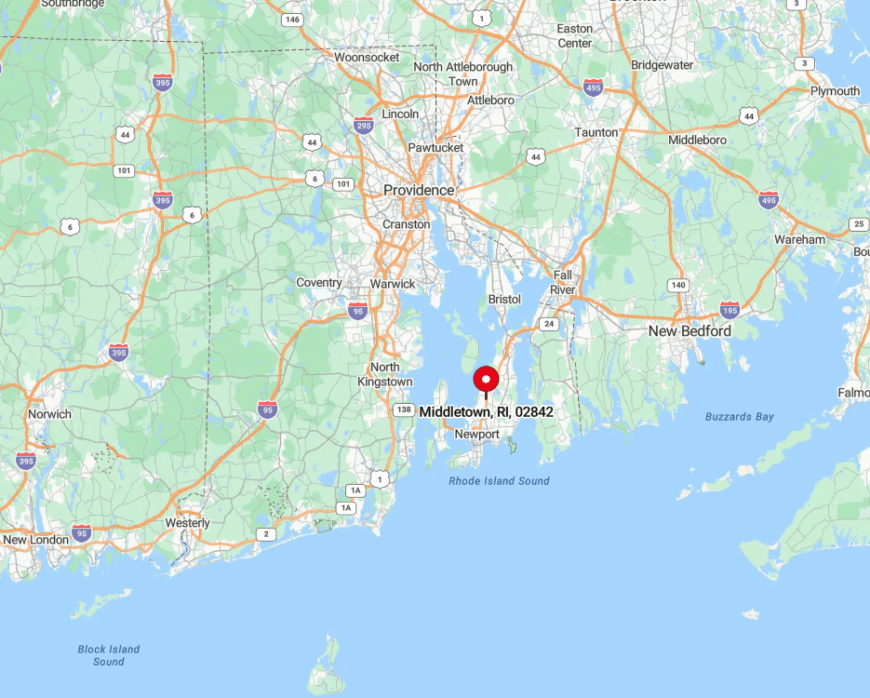
Middletown occupies the center of Aquidneck Island, sandwiched between Newport to the south and Portsmouth to the north. Its south-facing beaches line the Rhode Island Sound, while its east side borders the quieter Sakonnet River.
Reaching the town is easy via Routes 138 and 114; public buses link it to downtown Newport in under fifteen minutes. Because the island’s ridgeline runs through Middletown, many farm roads crest just high enough for sweeping two-directional water views.
12. South Kingstown: Coastal Beauty and Historic Villages

South Kingstown feels like a patchwork quilt of beaches, university energy, and colonial villages stitched together by salt ponds. I often start in the Kingston Historic District, where 18th-century houses flank shaded streets and the white steeple of the Old Narragansett Church catches morning light.
From there, it’s a short hop to the University of Rhode Island’s campus, whose botanical gardens and glass greenhouse are free to wander. But I’m usually drawn to the shoreline: Moonstone Beach offers excellent seaglass hunting, while East Matunuck hosts sunset bonfires that flicker against the surf.
The Great Swamp Management Area provides miles of boardwalk through cedar bogs—an unexpected taste of wilderness near the sea. Throw in farmers markets loaded with local scallops, and you’ll see why the town checks so many boxes.
The average price for a 3-4 bedroom home in South Kingstown ranges from $500,000 to $800,000, reflecting the town’s blend of natural beauty and small-town coastal living.
Where is South Kingstown?
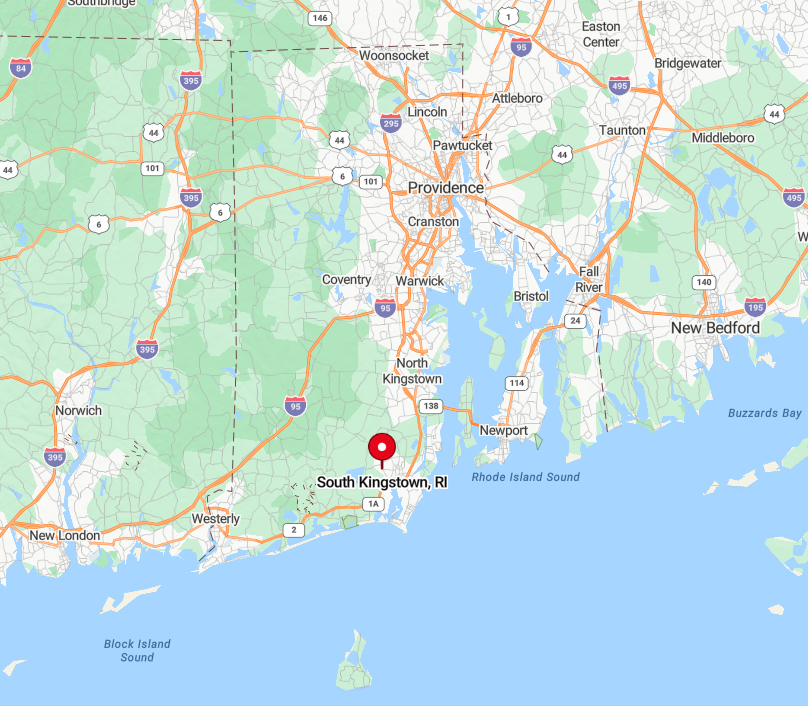
Spread across the western side of Narragansett Bay, South Kingstown stretches from Route 138 south to the Atlantic, encompassing several distinct villages. US 1 cuts through it, delivering beachgoers straight to the shore in summer.
Kingston Station on the Northeast Corridor offers Amtrak access, making a car-free visit surprisingly feasible. Because barrier spits shelter large salt ponds, kayaking routes weave behind dunes for miles with only herons for company.
11. Charlestown: Beaches and Natural Reserves
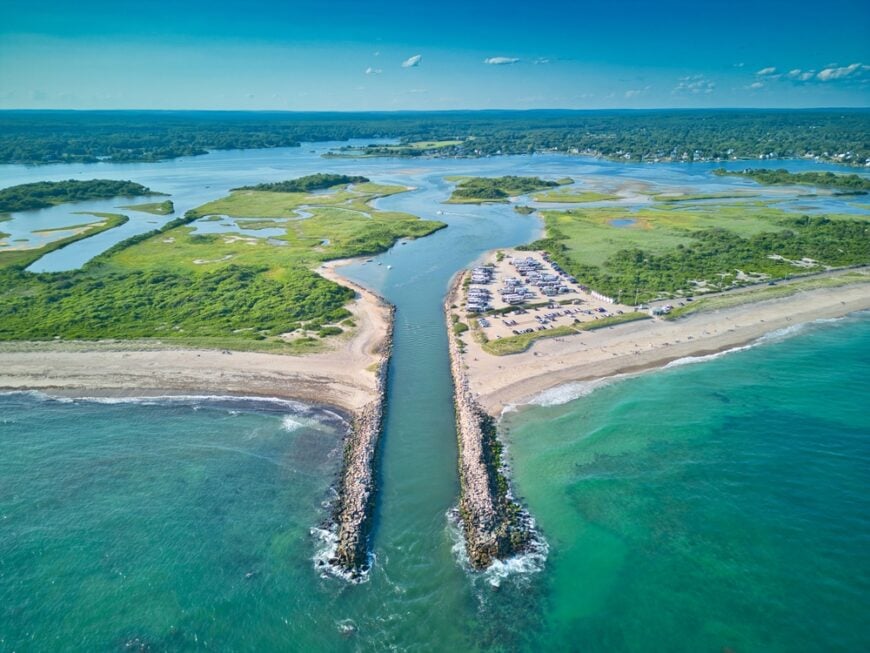
Charlestown might boast some of Rhode Island’s broadest beaches, yet it retains an understated vibe thanks to vast tracts of conservation land. I usually set up my umbrella at Charlestown Breachway, where anglers jig for striped bass right where the tidal pond meets the ocean.
Not far away, the Kettle Pond Visitor Center introduces me to the rich ecosystems of the Ninigret National Wildlife Refuge, then I head out on sandy trails to spy fiddler crabs and least terns.
Nightfall invites a different delight: Frosty Drew Observatory opens its dome for public stargazing on clear Fridays, and the Milky Way regularly steals the show in this dark-sky pocket.
For a quirky detour, the Fantastic Umbrella Factory combines bamboo gardens with artisan shops and free-roaming chickens—eclectic Rhode Island at its best. 3-4 bedroom homes in Charlestown are priced between $500,000 and $800,000, offering a scenic retreat close to pristine beaches and peaceful salt ponds.
Where is Charlestown?
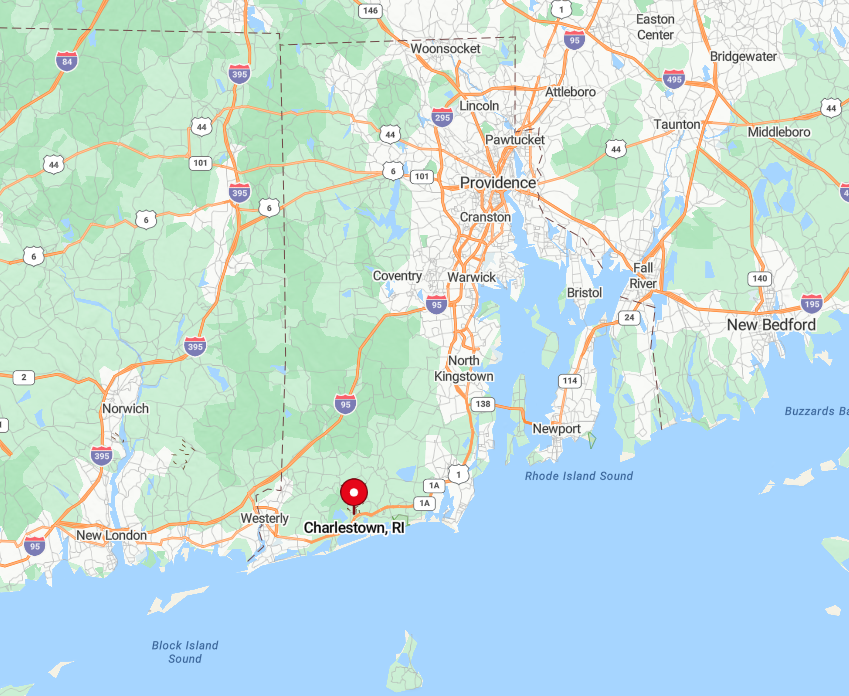
Situated along the south-central stretch of Rhode Island’s Atlantic coast, Charlestown lies between Westerly and South Kingstown. The town’s geography centers on salt-pond lagoons separated from the ocean by narrow barrier spits, creating prime habitats for wildlife and paddlers. Y
ou’ll access it via US 1, with clearly marked turns to beach roads but few traffic lights to slow the journey. Without rail or major bus service, driving remains the simplest approach, which helps preserve the area’s low-key feel.
10. East Greenwich: Vibrant Main Street and Waterfront
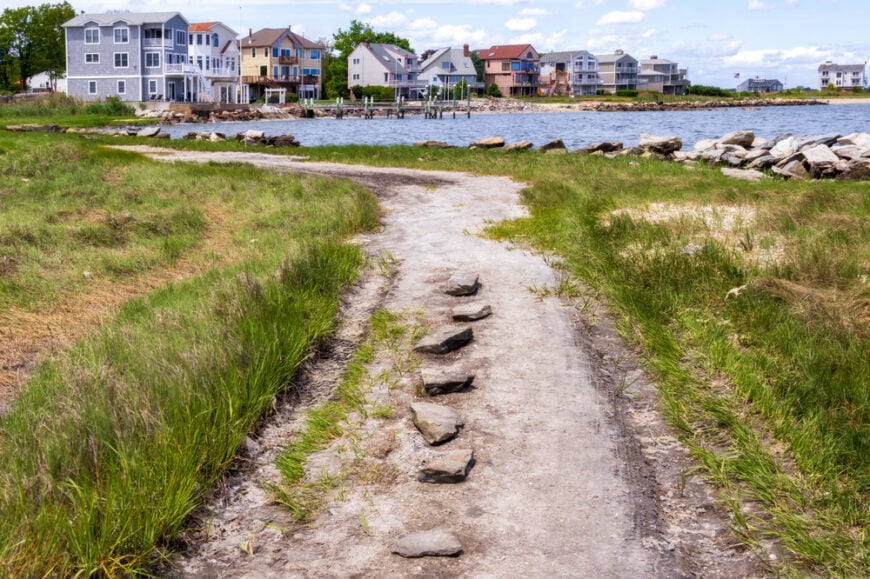
East Greenwich offers the liveliest restaurant row in the upper bay region, yet keeps its small-town personality intact. Main Street hums with bistros, oyster bars, and boutiques tucked into 18th-century brick and clapboard buildings, so dinner often turns into an impromptu history tour.
Down the hill, the town dock fills with cruising sailboats whose crews spill onto deck bars like Finn’s Harborside for live music. I like timing my visit with the Thursday night summer concert series at Academy Field, where kids chase fireflies while local bands cover classic rock.
History buffs shouldn’t miss the Varnum Armory Museum’s surprising cache of Revolutionary-era muskets. A sunset stroll along Scalloptown Park’s boardwalk caps the evening with osprey silhouettes and pink-hued water.
The average price for a 3-4 bedroom home in East Greenwich ranges from $600,000 to $900,000, making it a refined and picturesque location along the coastline.
Where is East Greenwich?

This town rests on the west bank of Narragansett Bay, roughly 15 miles south of Providence and accessible via Exit 8 on I-95. Its downtown climbs a gentle hill from the waterfront marina to Post Road, so bay breezes funnel up every side street.
Rhode Island Public Transit Authority buses connect East Greenwich to Providence, but most visitors prefer the quick drive that deposits them directly into ample public parking. Because Greenwich Cove carves deep inland, the harbor stays sheltered, making it a favorite stop for weekend sailors.
9. Wickford Village: Colonial History and Harbor Views
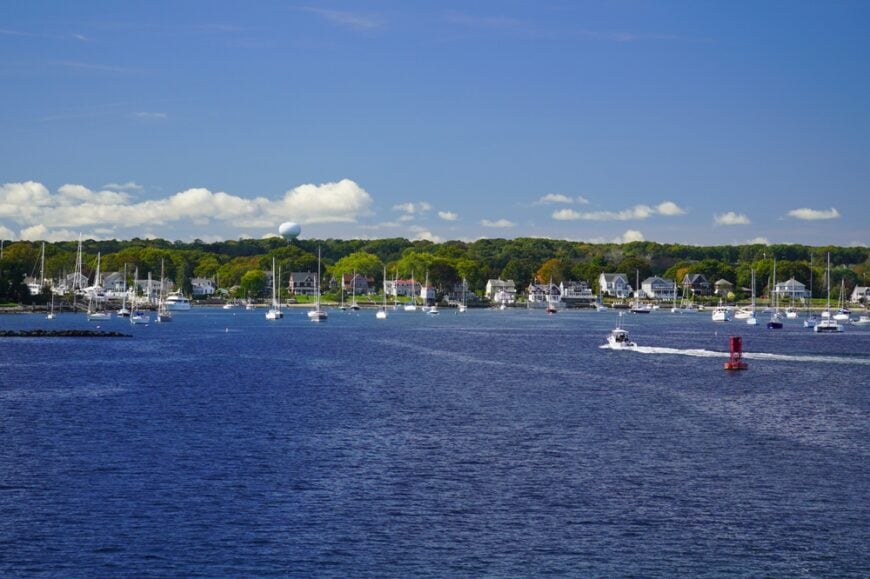
Walking Wickford’s brick sidewalks feels like stepping into an 18th-century painting, only with better coffee and kayak rentals. Harbor cottages sport widow’s walks, and the First Baptist Church’s white steeple reflects perfectly in placid tidal canals.
I’m partial to ducking into the small-but-fascinating Smith’s Castle, a 1678 plantation house that hosts archeology digs on summer weekends. Water-based fun is equally close: paddleboards for rent let me glide past wooden schooners moored behind gray, weathered boathouses.
Each July, the Wickford Art Festival turns every lawn into a gallery, making the village buzz without losing its easygoing pace. Add a bowl of chowder from Tate’s Fish House, and you’ve tasted local tradition in one spoonful.
3-4 bedroom homes in Wickford Village are priced between $600,000 and $900,000, offering a walkable seaside village atmosphere steeped in history and charm.
Where is Wickford Village?

Wickford forms the historic core of North Kingstown on the western side of Narragansett Bay. It clusters around a snug natural harbor protected by a breakwater, which keeps the waters glassy enough for novice paddlers.
Reaching it is simple via Route 1A, about twenty minutes south of Providence or ten minutes north of Newport using the Jamestown Bridge. MBTA commuter trains stop at nearby Wickford Junction, then a quick rideshare or bus drops you at the village gate.
8. Tiverton Four Corners: Artistic Enclave by the Sea
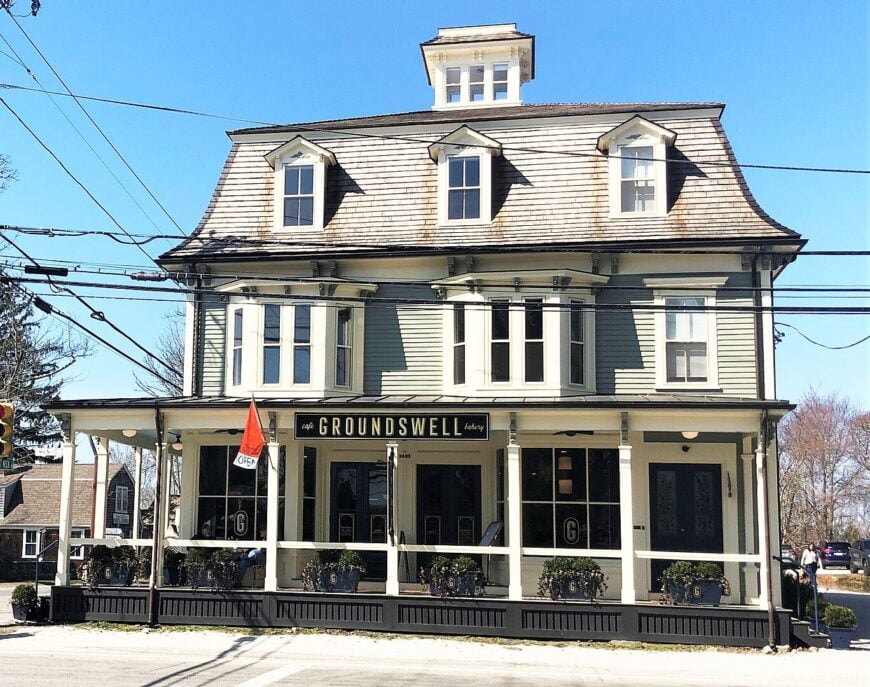
Every time I reach Tiverton Four Corners, I feel like I’ve stumbled into a rural New England painting dotted with galleries instead of barns. The 18th-century mill buildings now house potters, jewelers, and the Gray’s Ice Cream stand, whose ginger ice cream earns its legendary status.
A short bike ride lands me at Fogland Beach, a crescent of pebbles ideal for windsurfing on the brisk Sakonnet River. I often pop into Groundswell Café for garden-view coffee before browsing art prints at the historic Soule-Seabury House.
Summer outdoor movies on the green draw locals with picnic blankets and jars of fireflies. It’s a crossroads where creative spirit meets coastal quiet, and somehow both flourish.
The average price for a 3-4 bedroom home in Tiverton Four Corners ranges from $500,000 to $800,000, offering rustic coastal living in one of Rhode Island’s most scenic communities.
Where is Tiverton Four Corners?
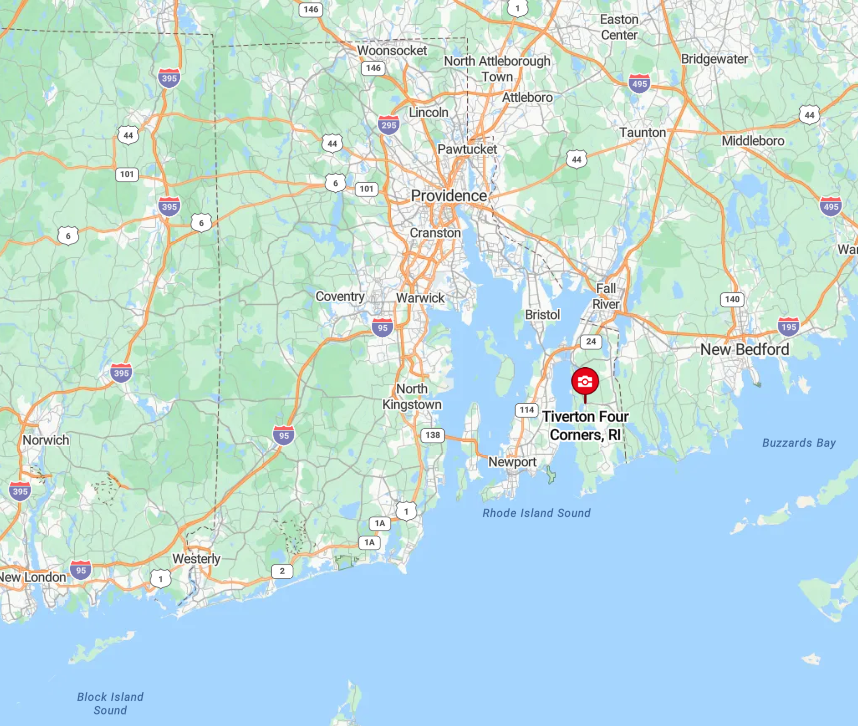
You’ll find this hamlet in the town of Tiverton, positioned on Rhode Island’s eastern shore along the Sakonnet River just south of the Massachusetts line. Route 77 delivers you straight to the stone-walled intersection that gives Four Corners its name.
From Providence, the drive east over the Braga Bridge and down Route 24 takes about forty minutes. Because public transit is sparse, arriving by car lets you pull off at farm stands or river overlooks that pepper the roadside.
7. Little Compton: Rural Charm Meets Ocean Views
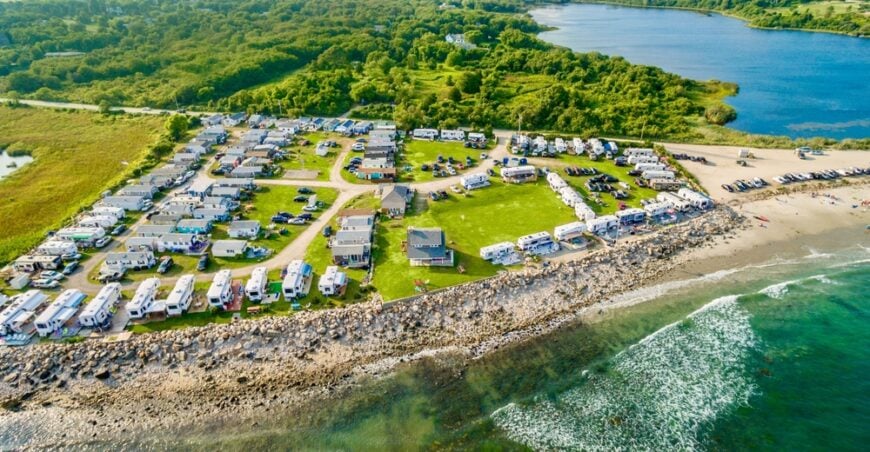
Little Compton remains one of Rhode Island’s most pastoral corners, where open fields roll to the sea and village life centers on a single commons. I like starting at Wilbor House Museum, which tells four centuries of local farming history, then scooting down winding lanes to South Shore Beach for salty breezes.
Nearby, Carolyn’s Sakonnet Vineyards pours crisp white wines in Adirondack chairs facing rows of vines and the ocean beyond. I always bring a blanket to Goosewing Beach Preserve, where piping plovers nest among sculpted dunes and the only soundtrack is wind in beach grass.
On the way back, the Art Café in the Commons serves espresso in a 200-year-old barn—an ideal blend of rustic and refined. Little Compton shows that seaside beauty sometimes comes with cows grazing just a stone’s throw from crashing waves.
3-4 bedroom homes in Little Compton are priced between $700,000 and $1,000,000, providing serene farmland and shoreline views for those seeking a private escape.
Where is Little Compton?
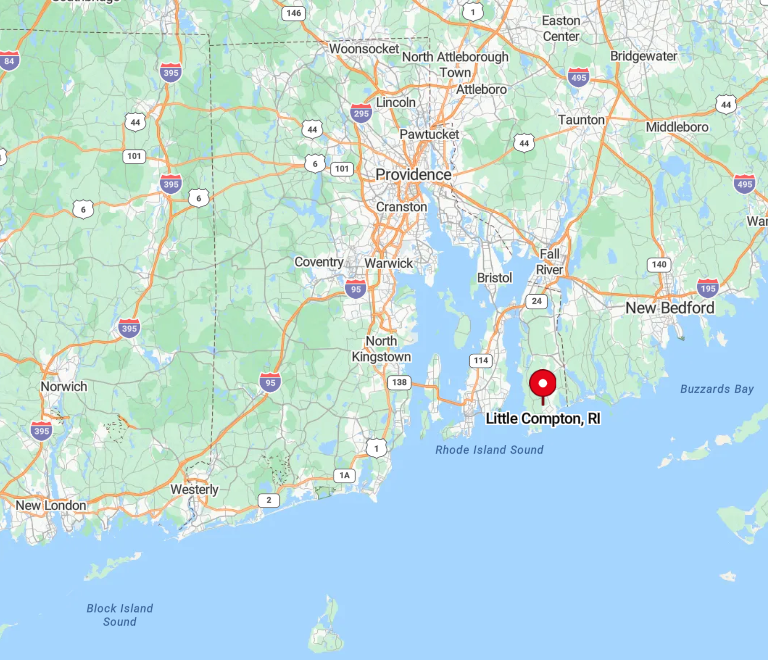
Positioned at Rhode Island’s southeastern tip, Little Compton sits on a peninsula bordered by the Sakonnet River and the Atlantic Ocean. Route 77 continues south from Tiverton before turning into country lanes lined with stone walls and hydrangea bushes.
Because there’s no highway or rail stop, the journey feels pleasantly removed; most visitors arrive via scenic backroads from Providence or Newport in under an hour. The township’s location at the state line means you can spot Massachusetts’ Elizabeth Islands shimmering off the coast on clear days.
6. Bristol: Harbor Town with Patriotic Spirit
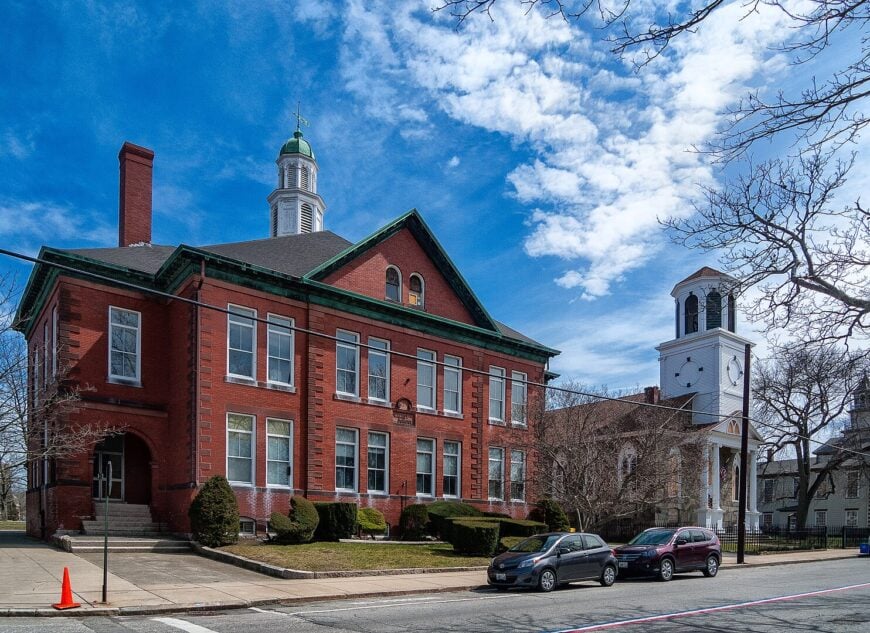
Bristol practically drapes itself in red, white, and blue, and not just on the Fourth of July, though its Independence Day parade is the nation’s oldest and a bucket-list spectacle.
The harbor bustles year-round with wooden classic yachts and the occasional tall ship docking at the Herreshoff Marine Museum, where I lose track of time admiring America’s Cup designs.
Colt State Park unfurls along the bay with miles of bike paths and picnic groves framed by stone jetties perfect for sunset photos. In town, Linden Place Mansion offers guided tours revealing ties to Caribbean trade and early cinema—silent-film star Ethel Barrymore once performed in its ballroom.
Grab a doughboy at Bristol Oyster Bar’s side window and stroll the flower-lined Hope Street, where colonial doors sport patriotic bunting, whatever the month. Bristol’s charm lies in how history, recreation, and sheer civic pride intertwine on every block.
The average price for a 3-4 bedroom home in Bristol ranges from $500,000 to $800,000, offering waterfront charm and access to historic streets and bay breezes.
Where is Bristol?
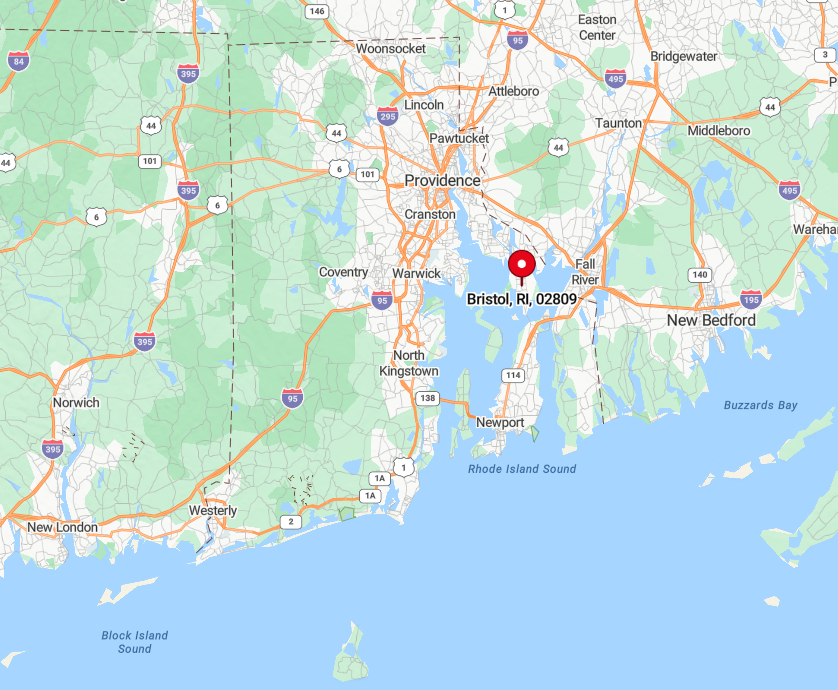
Bristol occupies a small peninsula jutting into Narragansett Bay roughly 20 miles southeast of Providence. It’s reached via Route 114, which crosses the scenic Mount Hope Bridge from Portsmouth to the south and hugs the shoreline north toward Warren.
The East Bay Bike Path terminates at Independence Park, offering car-free travelers a gorgeous ride along coves and salt marshes. Because water surrounds three sides, breezes moderate summer heat and deliver seabird flyovers at dawn.
5. Watch Hill: Elegance and Seaside Splendor

Watch Hill feels like a slice of Newport luxury transplanted to Rhode Island’s westernmost headland, only with fewer crowds and more sweeping dunes. I always take a spin on the Flying Horse Carousel—the nation’s oldest operating carousel—before grabbing an ice cream cone to amble past boutiques lining Bay Street.
Beyond town, the famed Ocean House hotel rises like a lemon-frosted wedding cake above East Beach, its veranda views stretching across Block Island Sound. A short walk out the narrow spit of Napatree Point rewards me with 360-degree water vistas and the crumbling remnants of Fort Mansfield hidden in beach plum thickets.
When the lighthouse beacon blinks at dusk, gilded cottages glow amber against the sky. It’s hard not to feel transported, even if you’re wearing flip-flops instead of a tux. 3-4 bedroom homes in Watch Hill are priced between $1,000,000 and $1,300,000, making it one of the state’s most exclusive seaside enclaves for luxury coastal living.
Where is Watch Hill?

This village forms the southwestern corner of Westerly, perched on a peninsula that pokes into the meeting point of Little Narragansett Bay and the Atlantic. Access arrives via a winding two-mile drive off US 1, with the final approach flanked by salt marshes and yacht docks.
The nearest rail stop is Westerly, from which taxis make the ten-minute hop out to Watch Hill. Its geography—nearly surrounded by water—explains both the dramatic vistas and the relative seclusion that persists even in high season.
4. Jamestown: Island Escape with Historic Forts
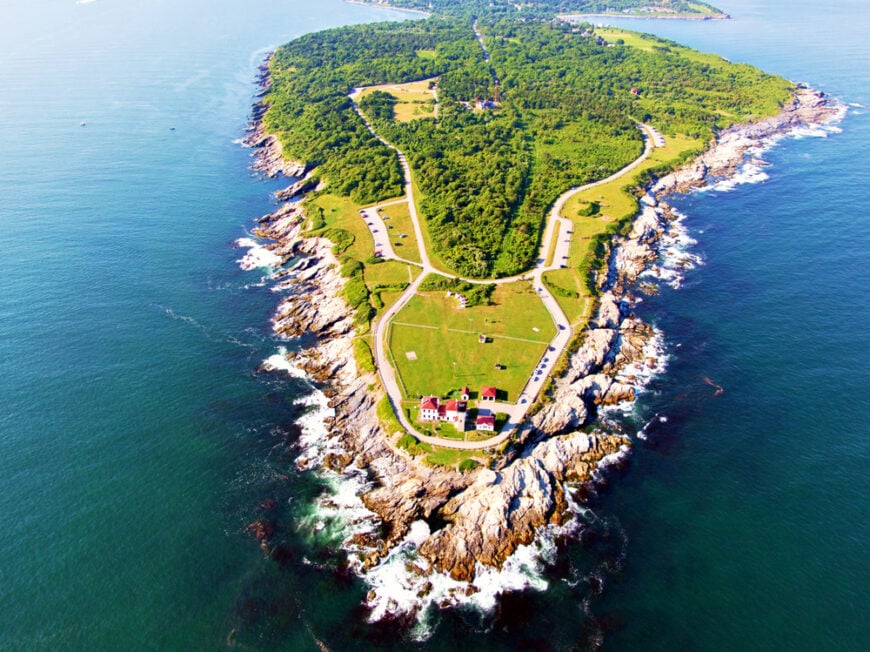
Perched in the middle of Narragansett Bay on Conanicut Island, Jamestown offers serenity minutes from Newport’s buzz. I never skip Fort Wetherill State Park, where 100-foot granite cliffs drop into turquoise coves popular with scuba divers exploring old wrecks.
The village center boasts ice-cream parlors and dockside dining, yet I can bike to Beavertail Lighthouse in ten minutes and feel oceans away, watching waves hammer ancient pillow lava formations.
Art lovers will enjoy the Jamestown Arts Center’s rotating exhibits and outdoor sculpture garden tucked in a former garage. In summer, the island’s farms set up roadside stands with heirloom tomatoes and cut-your-own flowers that make a picnic unequaled in freshness.
Jamestown’s slow pace and kaleidoscope of maritime views keep drawing me back across the bridge. The average price for a 3-4 bedroom home in Jamestown ranges from $900,000 to $1,200,000, reflecting its appeal as a premier island retreat with panoramic ocean views.
Where is Jamestown?
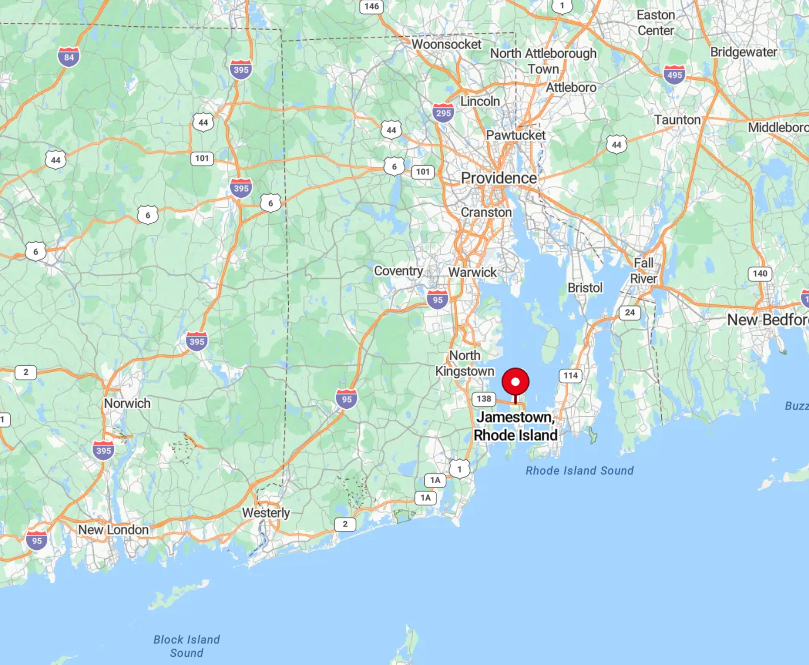
Jamestown sits smack in the center of Narragansett Bay, connected by the towering Claiborne Pell Bridge to Newport on the east and the Jamestown Bridge to North Kingstown on the west. This strategic location once guarded the bay’s entrance, which explains the chain of coastal forts now open to visitors.
Reaching the island is quick via Route 138, and RIPTA buses link it to Newport for those without cars. Because water surrounds the town, almost every road ends at a cove, a beach, or a ferry landing—ideal for sunset hunters.
3. Block Island: Untouched Natural Beauty and Lighthouses

Block Island feels like New England distilled to its purest elements: dramatic bluffs, rolling meadows, and Atlantic horizon in every direction. I rent a bike on arrival and follow the eight-mile perimeter loop, pausing at Mohegan Bluffs where 141 wooden steps descend to a secluded beach framed by 200-foot clay cliffs.
North Light and Southeast Light bookend the island, both 19th-century beacons that still guide mariners and photographers alike. For wildlife, the Clay Head Preserve’s maze of shrub-lined trails hosts songbirds and migrating monarchs in September.
Even downtown Old Harbor retains low-key charm with porches creaking under rocking chairs instead of neon signs. Nights often end for me at Payne’s Dock, licking salt from my lips as the sky explodes with stars unspoiled by mainland glare.
3-4 bedroom homes on Block Island are priced between $1,200,000 and $1,500,000, offering a rare opportunity to live in one of New England’s most scenic and secluded coastal villages.
Where is Block Island?
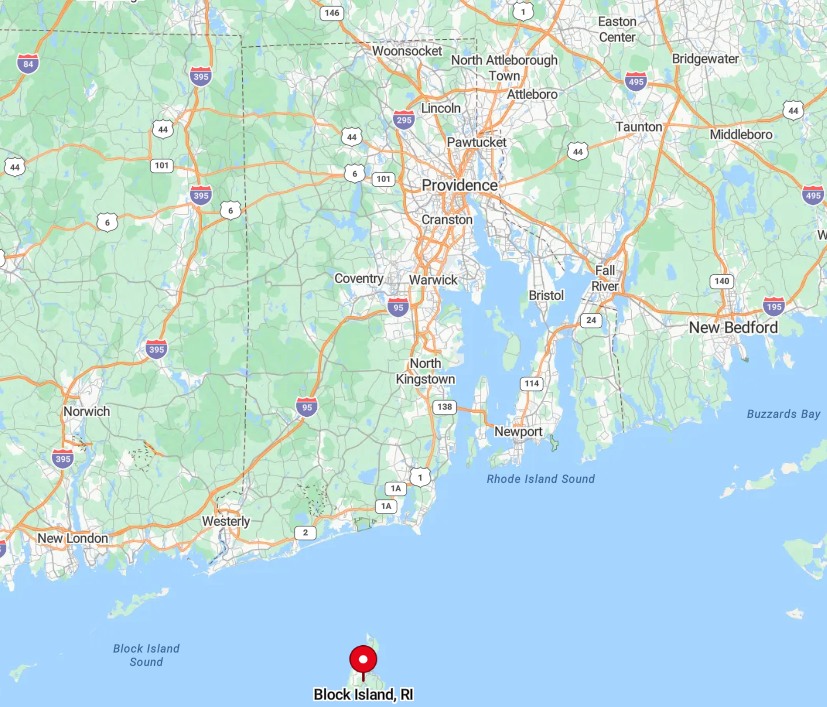
Floating 13 miles off Rhode Island’s mainland, Block Island sits in the open Atlantic between Montauk Point and Point Judith. Because 40 percent of its land is protected, open vistas dominate every turn.
Ferries run from Point Judith year-round and seasonally from Newport and New London, while small planes land at the island’s compact airport. The very separation that defines it—reachable only by boat or sky—ensures the unhurried atmosphere that visitors cherish.
2. Narragansett: Surfing Haven with Historic Towers
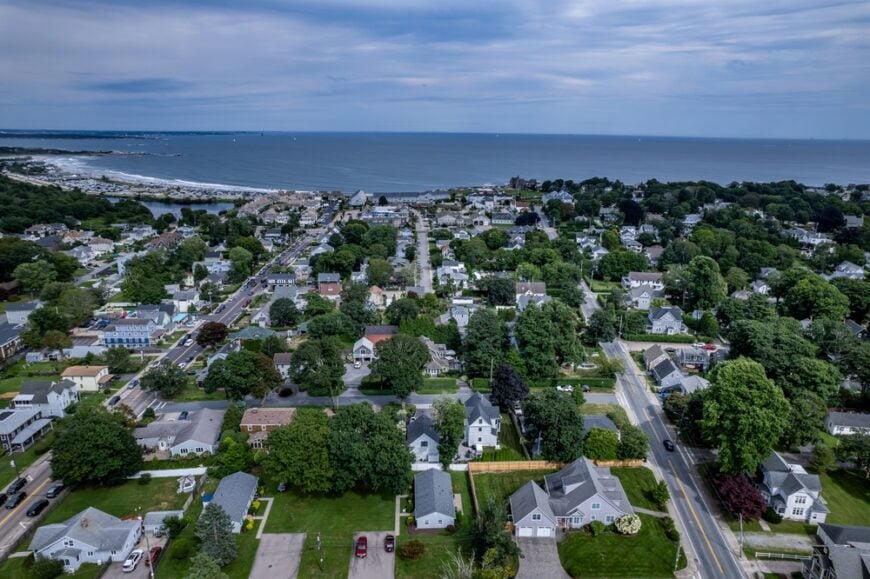
Narragansett manages to mix classic beach-town fun with architectural reminders of its turn-of-the-century resort days. The twin-arched Narragansett Towers, survivors of a grand 1886 casino, still guard the seawall and host swing-dance nights that spill ocean air into ballroom steps.
I catch waves at The Town Beach, whose consistent break has schooled generations of local surfers, then recover with Del’s frozen lemonade on the promenade. A sunset stroll along Ocean Road reveals dramatic surf pounding black volcanic outcrops near Scarborough and Point Judith Light.
Fishermen converge at the Galilee docks for daily trips, and I always snag just-landed calamari before boarding the Block Island ferry next door. Add the quietly gorgeous Black Point trail—where wildflowers frame sea cliffs—and Narragansett proves classic doesn’t mean predictable.
The average price for a 3-4 bedroom home in Narragansett ranges from $600,000 to $900,000, providing a vibrant beach town lifestyle along one of Rhode Island’s most beloved coastlines.
Where is Narragansett?
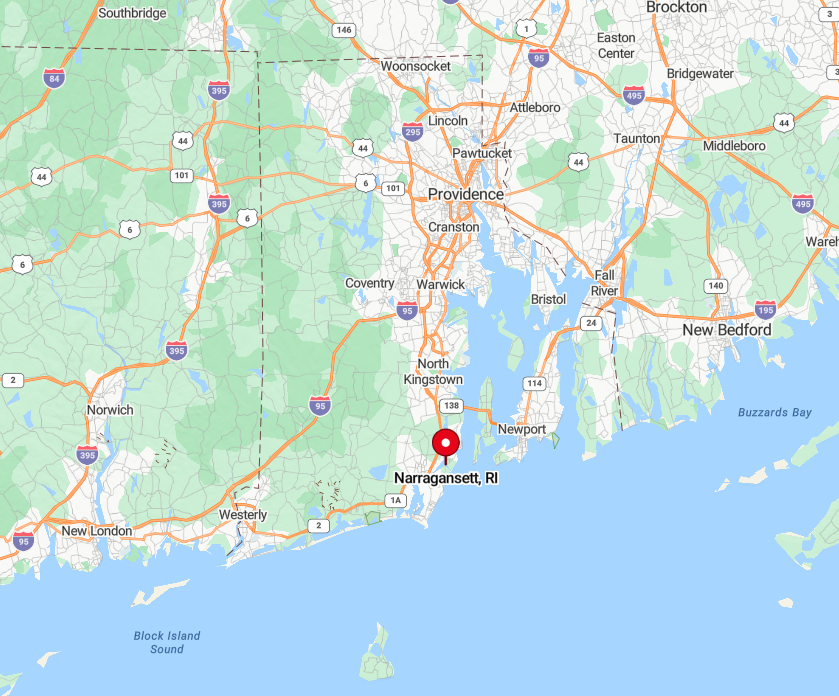
This town sprawls along Rhode Island’s south-central coast, occupying the headland between Narragansett Bay and Block Island Sound. Route 1A traces the shoreline, linking beaches like pearls on a string and offering scenic pull-offs at every curve.
From Providence, the drive is forty minutes; RIPTA’s seasonal Beach Bus adds stress-free access for weekenders. Because the Point Judith ferry terminal anchors Narragansett’s tip, the town doubles as a springboard for island adventures.
1. Newport: The Sailing Capital with Gilded Age Mansions
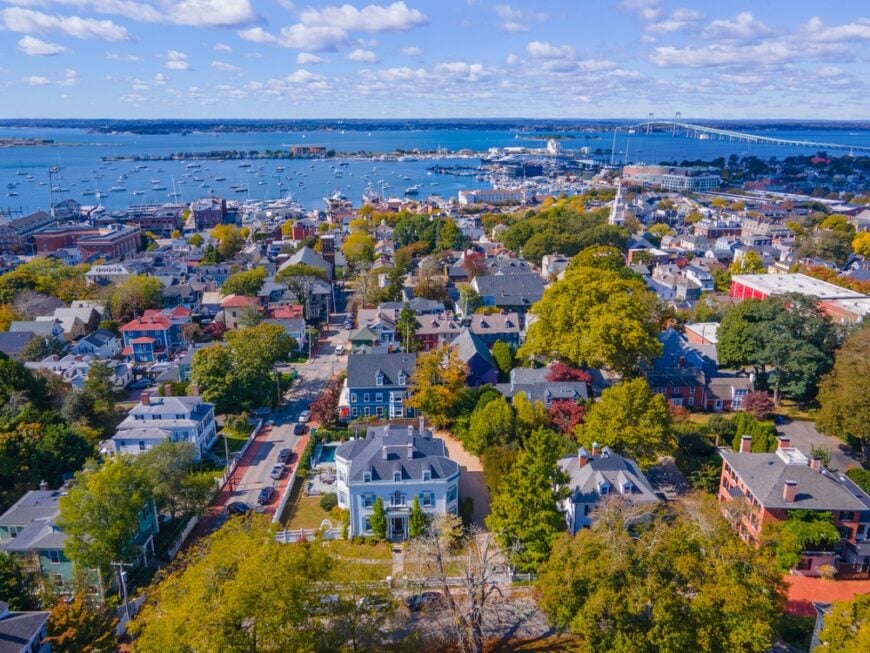
Newport is a maritime jewel whose polished decks and turreted mansions continue to dazzle me visit after visit.
The Cliff Walk threads five shoreline miles beside breakers on one side and Gilded Age opulence—think The Breakers and Marble House—on the other, allowing a single stroll to marry raw ocean power with human extravagance.
Downtown, historic Thames Street pulses with sailor bars, seafood shacks, and galleries housed in colonial storefronts, while schooners rock gently at Bowen’s Wharf awaiting sunset cruises.
Each June, the Newport Bermuda Race sets spinnakers ablaze with color as yachts depart for open sea, reinforcing the city’s title as Sailing Capital of the World. For a quieter moment, I escape to the Arts & Crafts gem Rough Point’s oceanfront lawn, where Doris Duke’s camels once grazed and the Atlantic soundtrack steals the show.
Whether you come for jazz festivals, chowder cook-offs, or simply to trace cobblestones beside gaslit lamps, Newport offers a finale worthy of its number-one ranking.
3-4 bedroom homes in Newport are priced between $700,000 and $1,000,000, making it an iconic choice for those seeking historic seaside elegance and breathtaking views.
Where is Newport?
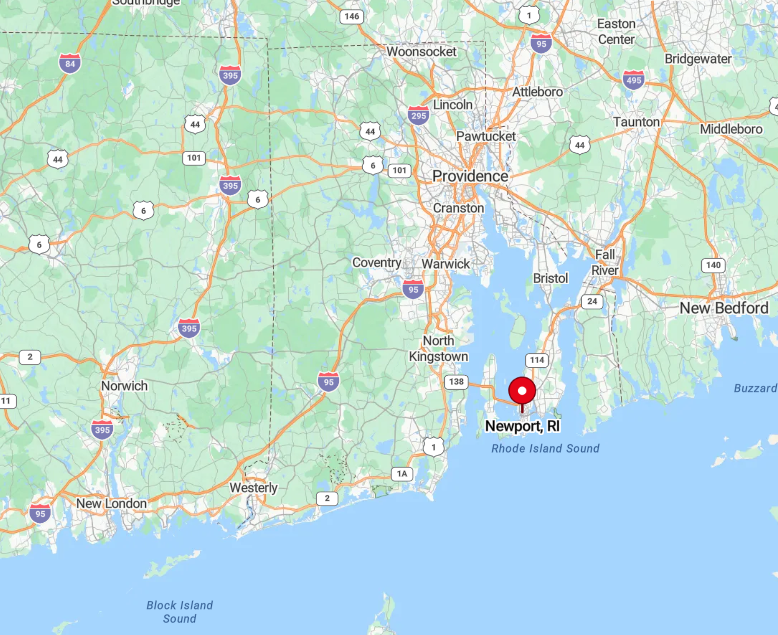
Perched on the southern tip of Aquidneck Island, Newport looks out over both Narragansett Bay and Rhode Island Sound. The city connects to the mainland via the soaring Claiborne Pell Bridge and to Jamestown via Route 138, while seasonal ferries link it to Providence and Block Island.
An Amtrak stop in nearby Kingston pairs with shuttle buses for rail travelers. Newport’s harbor, naturally deep and sheltered, has lured sailors since the 17th century—and it remains the scenic heart of this storied town today.






